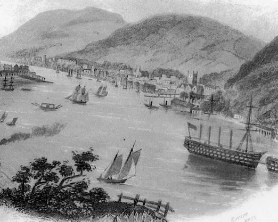Friends of Hastings Cemetery
Francis Guillemard Simpkinson de Wesselow -
In March 1832 he joined the navy as a first-

Ten months later he joined the Sulphur. In 1836 this surveying ship under Captain Edward Belcher began a seven year voyage around the world. In various places Simpkinson (as he then was) helped to take synchronous pendulum observations, and in Belcher's Narrative of a Voyage around the World (London, 1843) he is mentioned as one of the two midshipmen who accompanied Belcher on a visit to the vice-
Simpkinson's own diary from 28 March to 25 August 1837, now in the Mitchell Library, Sydney, describes the ship's progress up the west coast of America especially from
H.M.S. Britannia in Dartmouth Panama to Mexico, and thence to Hawaii, where he thought Belcher's attempt to restore order with the help of a French frigate was very badly handled. Simpkinson did not complete the world voyage, for in June 1838 he was transferred to the Harrier. It is thought he was have at the Royal Naval College In the early 1840s. After serving in the China war as gunner's mate, he was to have been placed on half-
In May 1844 he was ordered to Van Diemen's Land restored to full pay and to place himself under the orders of Lieutenant Joseph Kay (son of the architect of Pelham Crescent. St. Mary in the Castle, and several other homes in Hastings) at the magnetic observatory in Hobart Town. Simpkinson arrived in the Pestonjee Bomanjee in September and was allowed double pay for his services at the observatory. He was promoted lieutenant in December 1845.
In 1849 Simpkinson left Hobart in the Calcutta for England, where he returned to half-